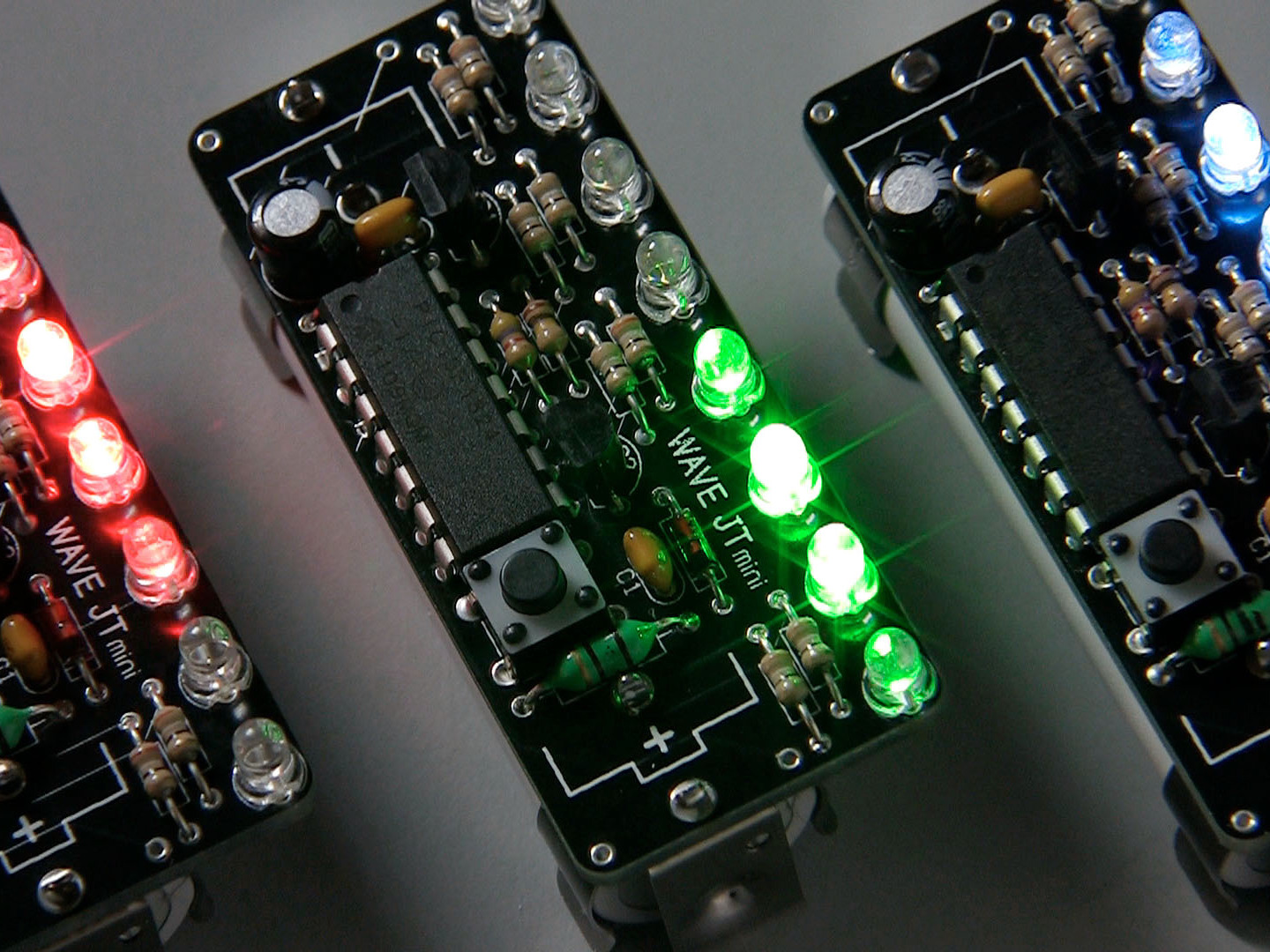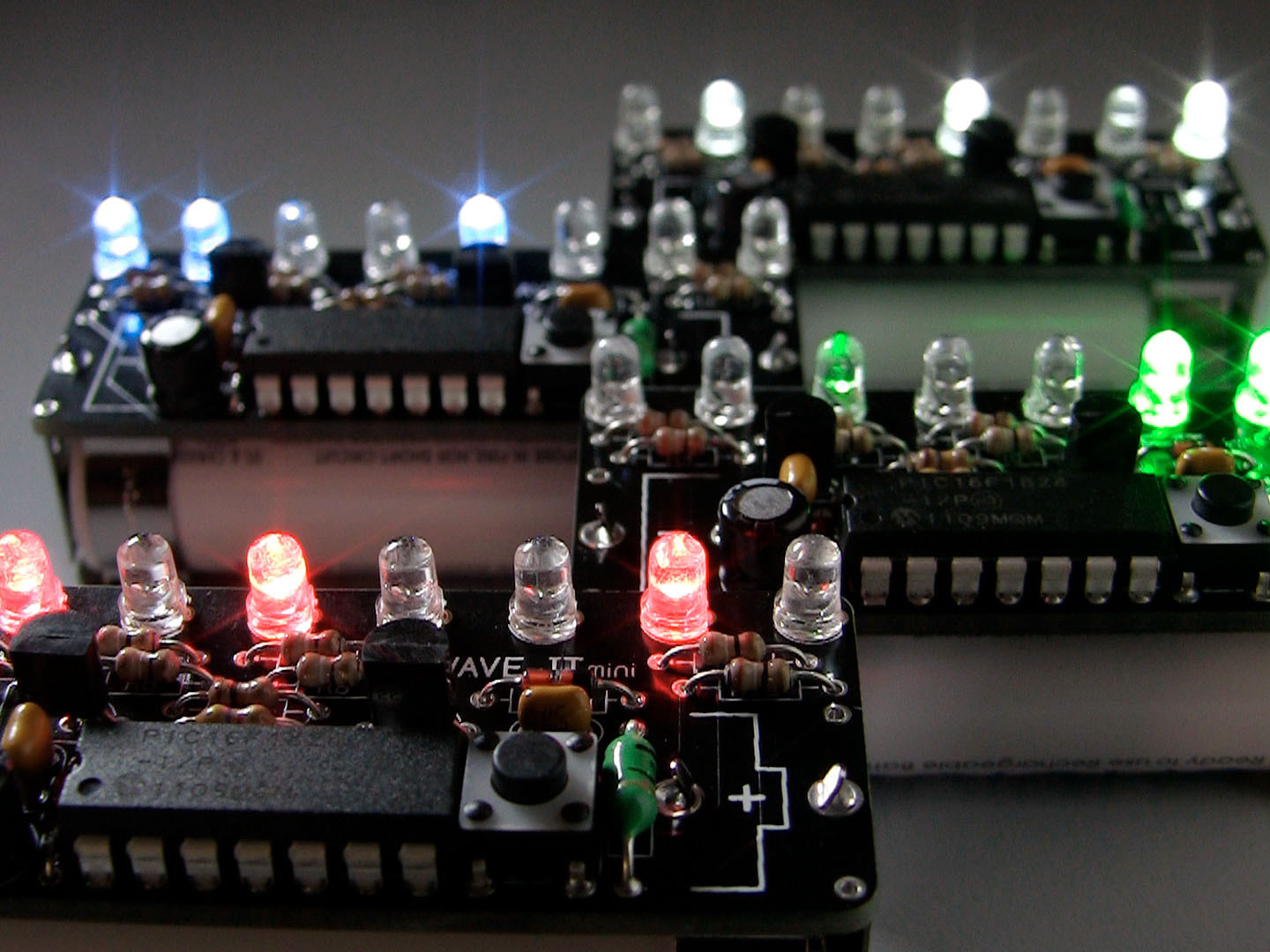I love LED chasers. A bunch of LEDs neatly turning on and off on a precise timing – lights running one way, then the other way… It’s relaxing, soothing, and hypnotic.
There are so many LED chaser/scanner/sequencer circuits out there; some are made with discrete transistors, some based on logic ICs, and more and more others are using microcontrollers.
There is one thing in common with all of the LED chaser circuits you find on the net – none of them can operate with just one alkaline battery!
Most of us know that LEDs need at least 2.2V or so to light. Blue and white LEDs require even higher voltage, typically 3.2V. So obviously you can’t use just one AA battery to operate an LED chaser. But we all know that there is the Joule Thief that boosts voltage high enough to light any LEDs. Why not use that to operate an LED chaser?


















